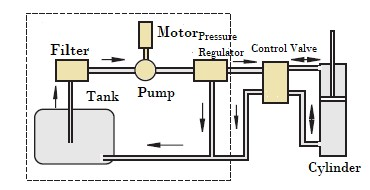This module equips trainees with the foundational knowledge and practical skills to manage hydraulic and pneumatic systems effectively

- Teacher: RAISSA IRADUKUNDA
This course provides students with the theoretical knowledge and practical skills required to install, maintain, and troubleshoot industrial machines used in manufacturing and production environments. Learners will gain competence in reading and interpreting machine installation drawings, aligning and assembling mechanical components, connecting electrical systems, and applying appropriate maintenance procedures to ensure optimal machine performance.
The course emphasizes adherence to safety standards, preventive maintenance practices, and the use of correct tools and instruments. Students will also develop problem-solving skills for diagnosing faults and performing corrective actions to minimize downtime and extend the lifespan of industrial equipment.
- Teacher: ELIE NSENGIMANA
Mechanical Machine Production introduces you to core manufacturing processes used for producing mechanical machines emphasizing on advanced techniques. It covers the concept of fabrication of machine parts, assembling of machines parts and storing of machines , enabling you to produce precise and repeatable mechanical components through hands-on practice and theoretical understanding.
- Teacher: Vedaste NDORUNKUNDIYE
This module is reserved for learners of Level Five (L5) Manufacturing Technology. It provides the skills, knowledge and attitude for learners to be competent in Milling machine operations. After completion of this module, the learner will be able to organize the work place, set the milling machine and mill the workpiece. She/he will be able to perform these tasks by respecting machining quality standards and regulations requirements.
- Teacher: PHILIBERT GIRANEZA
Pipes
- Purpose: Transport fluids (liquids, gases, slurries) under pressure or flow.
- Materials: Steel, copper, PVC, HDPE, etc.
- Standards: ASME B31.1 (Power piping), B31.3 (Process piping), etc.
- Components:
- Pipes
- Fittings (elbows, tees, reducers)
- Valves
- Flanges and gaskets
- Design Considerations:
- Pressure and temperature
- Flow rate
- Material compatibility
- Corrosion resistance
Pressure Vessels
- Purpose: Hold gases or liquids at a pressure substantially different from ambient pressure.
- Common Uses:
- Boilers
- Heat exchangers
- Reactors
- Storage tanks
- Materials: Carbon steel, stainless steel, composites
- Design Codes: ASME Section VIII (Boiler and Pressure Vessel Code)
- Key Parts:
- Shell
- Heads (end caps)
- Nozzles
- Supports (saddles, skirts)
- Safety Features:
- Pressure relief valves
- Burst discs
- Inspection ports

- Teacher: ALBERT IMANIRAFASHA
